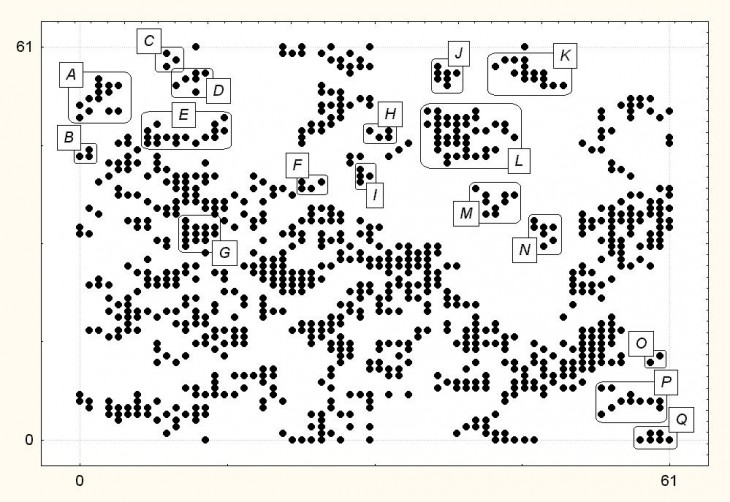Swarm Intelligence based (http://chemoton.files.wordpress.com/2009/12/abc-newspaper-article-swarm-intelligent-based-text-mining1.jpg)
Swarm logic is indeed one of the new approaches in emerging to describe a form or a system in many aspect. The idea of swarm intelligence basically is a “population” of local interactions to the environment in a greater amount that create a global system. This swarm intelligence expression was first introduced by Gerardo Beni, Susan Hackwood and Jing Wang in 1989 in the context of robotic systems which describe the emergent collective behavior. Nowadays this new approach of collective behavior has diversely implemented in many perspective, from biology (human, animal and trees), social structure like economic, engineering, architecture, until as artificial as robotic, and computer science, etc. From the example of Steven Johnson’s “Emergence: The Connected Lives of Ants, Brains, Cities and Software”, he wrote about the idea of creating a “form” of living, on having emergence logic from the smallest scale as ants and cells, into a larger scale as neighbor and cities. He tried to define how complex system is being formed by local interactions. And how such colony of ants’ behavior, the swarm logic, can give example of way of living for human level.
Collective behaviors provide a big role in creating a large social element such as neighborhood, or city. There is sometime a repetitive behavior, and sometime a diverse or even spontaneous behavior. Repetitive such as sleep-work-eat do create a rhythmic of pattern that can be “calculated” in a neighborhood. And the contrary, a variety of behavior can gives knowledge and the ability for neighbor to adapt in any circumstances. These create traces of patterns in social behaving, also gives a principles of self-organization. It creates a city.
I like the idea in the chapter of Kevin Kelly’s “Bottom Up is not Enough”, it tells about how the proper quantity of top-down is needed but still the dumb hive or bottom-up has to be more. Having “editorship”, expertise – I would call also master-planer, are like vitamins, that is having too much can give toxics, or not giving a good quality the master-plan itself. But somehow we need a right amount of them to control. This bottom-up intelligence reflect how local interaction can rise and emergence to a collective behavior with a decentralized and self-organizing systems. I’m interested about how to erect and “calculate” design process with this system based on behavioral design methodologies. From my previous blog summarizing the book of “Tarzan in the Media Forest” by Toyo Ito, I tried to question on how the idea of changing behavior can generate a system or methodology on defining a form or a design. From the chapter of “Behavioral Matter” by Kokkugia, this behavioral design methodology can interpret complex order in such design. And one of the way is desolating hierarchies, quote “the dissolution of hierarchy causes a shift from the notion of master-plan to master-algorithm in urban design”. This change of paradigms cause a change process of deciding such design. And such design needed a tool, or in this case multi-agent technology. First is the capability of designed agent to self-organize urban mater, and second is that urban agents are used in creating infrastructure and circulatory complexion. This technology is not to map out the motion of swarming but to define a system that produce collective behavior in the form of urban structure. It is to recognizing the swarm intelligence, the emergence logic, the collective behavior onto creating a form of global interactions, or cities.

